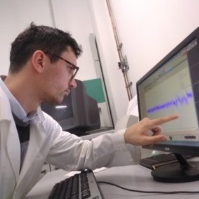Beyond the Platinum in Metal-Based Cancer Therapy
A special issue of Pharmaceutics (ISSN 1999-4923). This special issue belongs to the section "Drug Targeting and Design".
Deadline for manuscript submissions: closed (20 March 2022) | Viewed by 22964
Special Issue Editors
Interests: metal-based drugs; cancer; chemotherapeutics agents; bioinorganic chemistry; protein metalation; DNA metalation
Special Issues, Collections and Topics in MDPI journals
Interests: bioinorganic chemistry; inorganic chemistry; NMR; metal-based drugs; chemotherapeutic agents
Special Issues, Collections and Topics in MDPI journals
Special Issue Information
Dear Colleagues,
Four decades after cisplatin was approved by the FDA, platinum-based compounds still represent the most valuable tools in the treatment of a wide variety of neoplastic diseases. Nevertheless, despite the undeniable advancements in cancer therapy which have been achieved with these kinds of molecules, some relevant drawbacks still encourage the discovery of new chemotherapeutic agents. First of all, the clinically established platinum drugs (i.e., cisplatin, oxaliplatin and carboplatin) are known to induce significant side effects in treated patients, such as bone marrow suppression, severe nausea and vomiting, ototoxicity, nephrotoxicity and epatotoxicity. Moreover, their effectiveness is usually highly reduced in the case of relapses. For these reasons, both life quality and life expectation of cancer-affected patients are often dramatically reduced. In this context, the discovery of new and safer chemotherapeutic agents still represents a central concern in the field of cancer research. More precisely, bioinorganic chemists should expand their interest towards the whole family of transition metals, with the aim of discovering new classes of active compounds without reverting to the irreplaceable electrophilic features of metal centres. This Special Issue aims to collect contributions reporting on advancements in the field of platinum-free metal-based anticancer drug candidates.
Prof. Dr. Wukun Liu
Dr. Damiano Cirri
Guest Editors
Manuscript Submission Information
Manuscripts should be submitted online at www.mdpi.com by registering and logging in to this website. Once you are registered, click here to go to the submission form. Manuscripts can be submitted until the deadline. All submissions that pass pre-check are peer-reviewed. Accepted papers will be published continuously in the journal (as soon as accepted) and will be listed together on the special issue website. Research articles, review articles as well as short communications are invited. For planned papers, a title and short abstract (about 100 words) can be sent to the Editorial Office for announcement on this website.
Submitted manuscripts should not have been published previously, nor be under consideration for publication elsewhere (except conference proceedings papers). All manuscripts are thoroughly refereed through a single-blind peer-review process. A guide for authors and other relevant information for submission of manuscripts is available on the Instructions for Authors page. Pharmaceutics is an international peer-reviewed open access monthly journal published by MDPI.
Please visit the Instructions for Authors page before submitting a manuscript. The Article Processing Charge (APC) for publication in this open access journal is 2900 CHF (Swiss Francs). Submitted papers should be well formatted and use good English. Authors may use MDPI's English editing service prior to publication or during author revisions.
Keywords
- metal-based drugs
- cancer
- chemotherapeutic agents
- bioinorganic chemistry
- protein metalation
- DNA metalation







